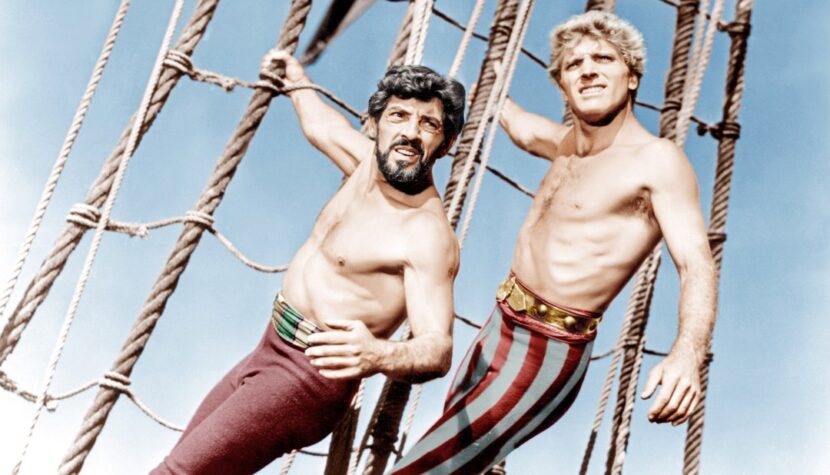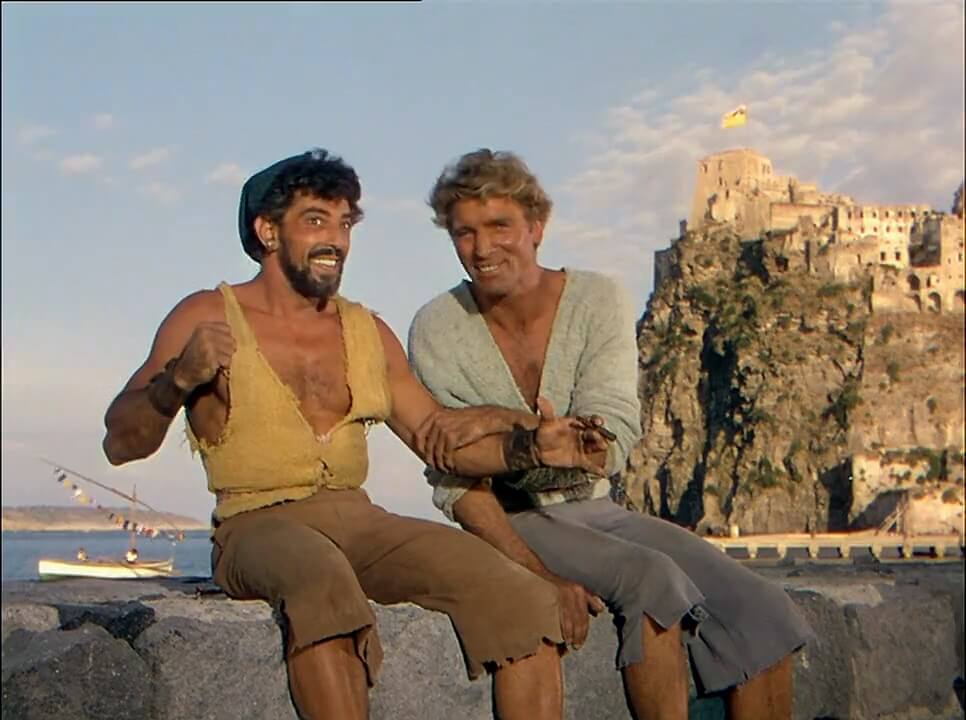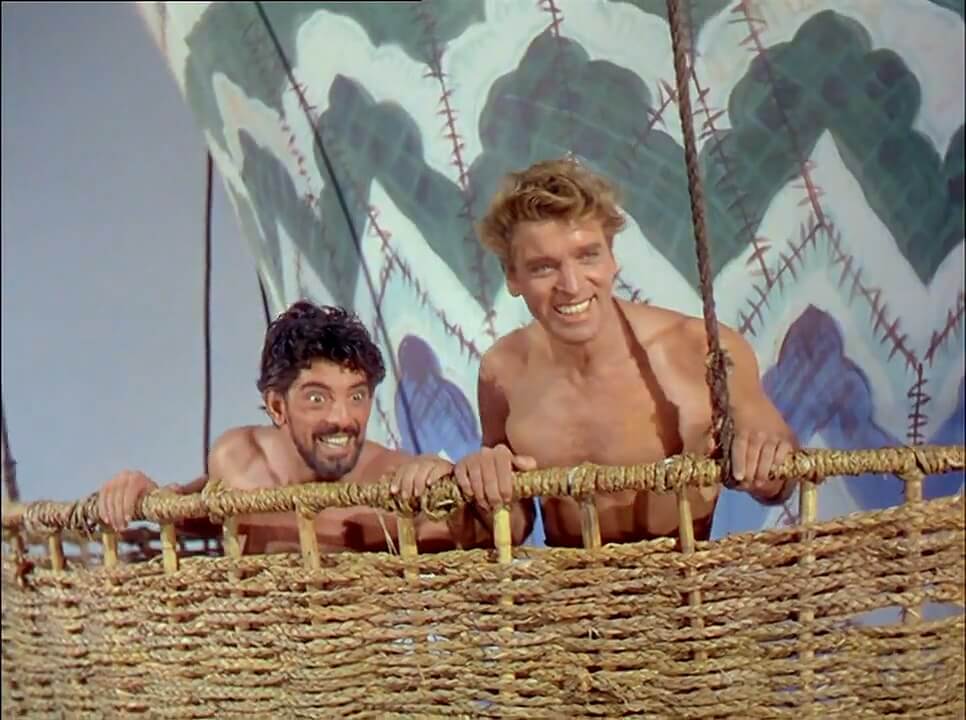THE CRIMSON PIRATE. Still a lot of fun

Movies about pirates have a long tradition and started appearing almost at the dawn of cinema. As early as the silent film era, there were several offerings that took viewers to the South Seas to plunder unsuspecting ships with a buccaneer crew. A flagship example is “The Black Pirate” from 1926, featuring the great star of the time, Douglas Fairbanks, performing daring stunts on screen. Another must-mention is “Captain Blood” from 1935, starring Errol Flynn, based on Rafael Sabatini’s excellent novel. At one time, it was the most expensive film in history, with a final sea battle that still impresses with its scale. I mention these two titles not by accident, as the 1952 film “The Crimson Pirate” draws heavily from them.
Originally, the film was intended to be a serious, even dark story set in the 18th-century Caribbean. However, director Robert Siodmak, having already made two such productions, wanted to create something lighter. He significantly reworked the script in forty-eight hours, adding a solid dose of humor. The result was a wild, adventurous story with a black flag in the background. The title role is played by Burt Lancaster, a World War II veteran and former circus acrobat who began his film career in his thirties, debuting in “The Killers” in 1946, which caught the attention of a Hollywood talent scout. He is accompanied by his performing partner, Nick Cravat, as the mute helper Ojo. In reality, the actor was not mute but had a very strong Brooklyn accent, so the filmmakers decided to have the character remain silent. Their experience in trapeze acts meant that both actors performed all the stunts themselves, such as jumping from mast to mast or climbing ropes. This gives the film a unique flair and clearly sets it apart from competing titles, although the events depicted cannot be taken seriously. However, this does not detract from the film, as the director intended to make a comedy.

“The Crimson Pirate” is set in the Caribbean but was filmed in Europe, on the island of Ischia and in the Bay of Naples. Interestingly, the plot unfolds in the late 18th century, long after the golden age of pirates had passed—the period when buccaneers were most active in the West Indies was roughly 1680-1720. Shifting the timeline does not diminish the enjoyment of the film and creates new plot possibilities, such as the characters using a hot air balloon. The duel and sea battle scenes are not as dynamic and tense as those in Renny Harlin’s “Cutthroat Island” or the “Pirates of the Caribbean” series, but they have their own somewhat naive charm. And since Jack Sparrow’s adventures have been mentioned, it’s worth adding that the Disney attraction, which inspired the famous film series, was itself inspired by “The Crimson Pirate.” Furthermore, “The Curse of the Black Pearl” successfully references the classic with Lancaster, and the sword fights in the Disney series, full of acrobatic duels, can be seen as directly influenced by Siodmak’s film.
Lancaster and Cravat appeared together in several titles, the most famous of which are “The Crimson Pirate” and “The Flame and the Arrow.” The former, costing just under two million dollars, became a big hit and has permanently entered the annals of cinema. Burt Lancaster attempted to produce a sequel in the seventies, but it never went beyond the planning stage.

Today, many would probably label “The Crimson Pirat” a charming oldie, but I cannot overlook it. Sure, in terms of spectacle, a film from the fifties cannot compete with contemporary, bombastic productions, but it undeniably offers a lot of fun. And it has a great main theme by William Alwyn, which is always an important asset.
Written by Piotr Zymelka

